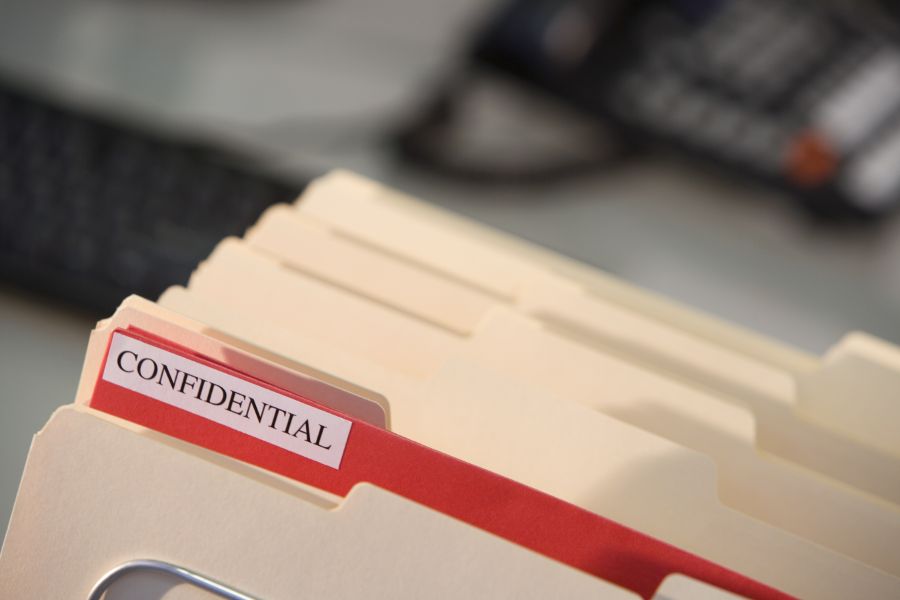
Safeguarding confidential information has become a top priority for individuals and businesses alike. Identity theft is on the rise, and the consequences can be devastating, leading to financial loss, damage to reputation, and even legal complications. Whether it’s through online data breaches or physical document theft, the threat of sensitive information falling into the wrong hands is very real. By taking proactive steps to protect confidential information, you can minimize the risk of identity theft and ensure your data remains secure.
Understanding Identity Theft
Identity theft occurs when someone unlawfully obtains and uses another person’s personal information—such as Social Security numbers, bank account details, credit card information, or even medical records—without their consent. This stolen information is often used for fraudulent activities like opening new credit accounts, applying for loans, or making unauthorized purchases.
The consequences of identity theft are far-reaching. Victims often spend months, if not years, recovering from financial loss and repairing their credit. In some cases, legal battles ensue as they attempt to clear their name from the actions of an identity thief. The emotional toll can also be significant, leaving victims feeling violated and powerless.
The Role of Document Shredding in Preventing Identity Theft
While much of the focus on data protection centers around cybersecurity, it’s crucial not to overlook the risks associated with physical documents. Many people unknowingly throw away sensitive documents like bank statements, tax returns, and even old credit cards without realizing how easily this information can be retrieved by identity thieves.
One of the most effective ways to protect against physical identity theft is by shredding sensitive documents. Document shredding ensures that any personal information is destroyed beyond recovery, rendering it useless to anyone who may attempt to steal it. By implementing regular shredding practices at home and in the workplace, you can significantly reduce the risk of identity theft from physical sources.
Protecting Confidential Information Online
While shredding paper documents is essential, protecting your digital information is equally important. Identity thieves increasingly target online platforms, looking for weak spots in security to access sensitive data. Here are some critical steps to safeguard your online information:
- Use Strong, Unique Passwords: Avoid using easily guessable passwords like your name or birthday. Instead, opt for complex passwords that include a combination of letters, numbers, and special characters. Consider using a password manager to store and generate unique passwords for each of your accounts.
- Enable Two-Factor Authentication (2FA): Many online platforms offer 2FA as an additional layer of security. With 2FA, you’ll be required to enter a secondary code, typically sent to your phone or email, when logging into your account. This makes it much more difficult for cybercriminals to gain access, even if they have your password.
- Be Cautious with Public Wi-Fi: Avoid accessing sensitive information, such as online banking or personal accounts, when using public Wi-Fi networks. Public networks are often unsecured and can be easily exploited by hackers to steal your data.
- Monitor Your Accounts Regularly: Frequently reviewing your bank statements, credit card activity, and credit report can help you spot suspicious activity early. If you notice any unauthorized transactions, report them immediately to your financial institution.
- Invest in Security Software: Anti-virus and anti-malware programs are essential for keeping your devices secure. These tools can help detect and block threats before they compromise your data.
Protecting Confidential Information in the Workplace
Businesses, regardless of size, handle vast amounts of sensitive information daily. From employee records to customer data, the responsibility to protect this information from identity theft falls on the organization. Here are some practices companies can adopt to safeguard confidential information:
- Implement a Shredding Policy: Ensure that any document containing sensitive information is shredded once it is no longer needed. Outsourcing to a professional shredding service ensures compliance with privacy laws and offers peace of mind that documents are disposed of securely.
- Train Employees on Data Security: Educating employees about the importance of data security and how to recognize phishing scams, malware, and other cyber threats is crucial. Regular training sessions can help foster a culture of awareness and vigilance.
- Restrict Access to Sensitive Information: Not every employee needs access to all company data. Implementing role-based access control ensures that only authorized personnel can view or handle confidential information.
- Secure Physical Workspaces: Locking filing cabinets, using secure document disposal bins, and installing surveillance cameras are just a few ways to prevent physical theft of sensitive data in the workplace.
- Encrypt Digital Data: Encryption is a powerful tool for protecting sensitive information stored digitally. In the event of a data breach, encrypted information will be unreadable to unauthorized users, minimizing the damage caused by the breach.
The Legal Side of Protecting Confidential Information
Businesses are also subject to various legal requirements when it comes to data protection. Laws like the Gramm-Leach-Bliley Act (GLB), Health Insurance Portability and Accountability Act (HIPAA), and Fair and Accurate Credit Transactions Act (FACTA) require businesses to take specific measures to protect sensitive information and prevent identity theft. Failure to comply with these regulations can lead to hefty fines and damage to a company’s reputation.
Document shredding plays a significant role in meeting these legal obligations, especially when handling customer or patient data. For example, under HIPAA, healthcare providers must dispose of medical records in a manner that ensures the information cannot be recovered, making shredding a preferred method.
Conclusion: Stay Proactive in Protecting Your Information
Whether it’s document shredding, using strong passwords, or implementing encryption, protecting your confidential information is critical in preventing identity theft. Both individuals and businesses must remain vigilant and proactive in safeguarding their sensitive data. By adopting best practices for data security and keeping informed about the latest threats, you can reduce the risk of identity theft and ensure that your personal or business information remains secure.
By
James Dowse CSDS
